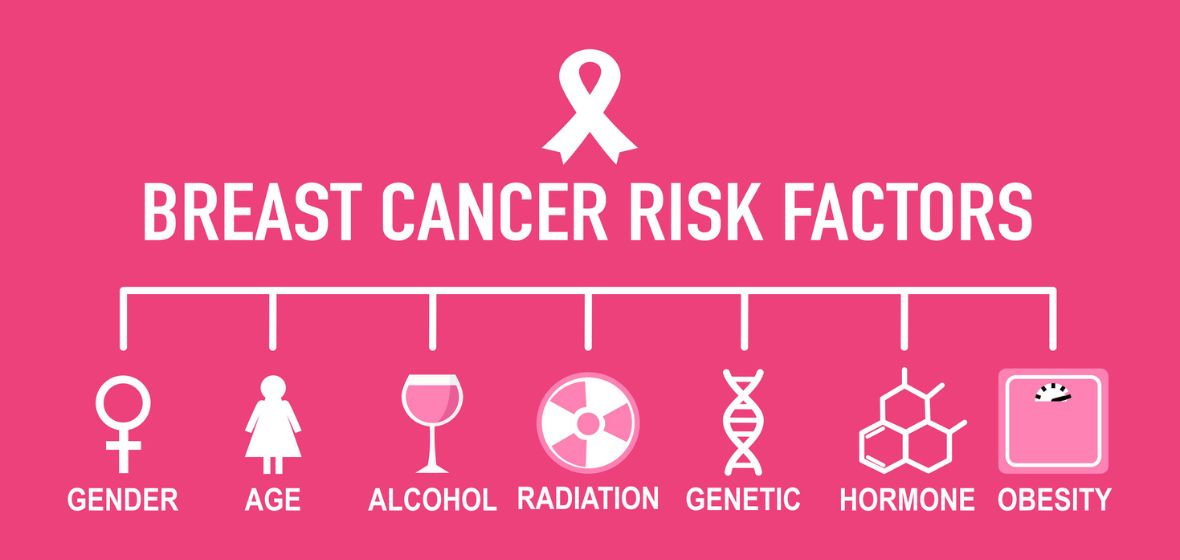Mammary Cancer
Millions of individuals worldwide, including both men and women, are impacted by the serious public health issue of breast cancer. It is cancer that begins in the breast tissue and can spread to other parts of the body if it is not detected early. Arimidex 1mg can be used to treat this type of cancer. The signs and causes of breast cancer will be examined in this article, with a focus on the importance of early detection and raising public awareness of this widespread disease.
Symptoms of breast cancer
The most typical indication of breast cancer is the development of a lump or tumor in the breast or under the arm. Despite the fact that these tumors are typically painless, a doctor suggest Aromasin 25mg is used to treat certain types of breast cancer (such as hormone-receptor-positive breast cancer) in women after menopause.
Changes in Breast Size or Shape:
Unexpected changes in breast size, shape, or contour may be a sign of breast cancer. It is important to assess any asymmetry between the two breasts. Skin changes including redness, dimpling, or puckering can be caused by breast cancer. An orange peel-like texture on the skin is referred to as peau d’orange. Breast cancer may be indicated by discharge from the nipple that isn’t breast milk, especially if it is bloody. Nipples that are inverted or flattened, as well as changes in their position, should be observed.
Although early-stage breast cancer is typically not painful, some patients may experience sensitivity, pain, or discomfort in the breast or nipple area. Unaccounted-for Weight Loss: When breast cancer is severe, the body uses a lot of energy to fight the disease, which leaves patients feeling exhausted and with unaccounted-for weight loss.
Causes of Breast Cancer
Breast cancer risk is increased by a family history of the disease, particularly in first-degree relatives (mother, sister, and daughter). Hereditary breast and ovarian cancer are strongly associated with BRCA1 and BRCA2 gene mutations.
Estrogen and progesterone, the hormones that control the menstrual cycle, have been related to the development of certain breast cancers. The risk may be increased by early menstruation, delayed menopause, and hormone replacement therapy.
Gender and Age:
Growing older is a significant risk factor for breast cancer. Despite the fact that people of all ages may be affected, the risk rises with age. Breast cancer is far more common in women than in men. Breast cancer risk may be increased by a personal history of certain non-cancerous breast conditions, such as atypical hyperplasia or lobular carcinoma in situ.
Radiation Exposure:
Early-life breast cancer risk is increased by prior chest radiation exposure, particularly in children. Obesity, poor eating patterns, inactivity, and binge drinking have all been linked to an increased risk of breast cancer.
Early detection and prevention
It is impossible to overestimate the significance of early detection in enhancing breast cancer outcomes. Regular breast self-exams and professional breast exams may help find any issues. Mammography, which involves taking a low-dose X-ray of the breast, is a crucial method for early detection in those over 40. Those who are more vulnerable may benefit from more frequent screenings or earlier start times.
Conclusion
The complex disease of breast cancer is influenced by genetic, hormonal, and environmental factors. The first stages in early detection and prevention are understanding symptoms and risk factors. By increasing awareness, promoting regular screenings, and adopting a healthy lifestyle, we can all work together to decrease the impact that breast cancer has on individuals and families throughout the world. Remember that knowledge is power and that prompt discovery might result in lifesaving. If you want to purchase this drug, visit Buygenericpills.com.





